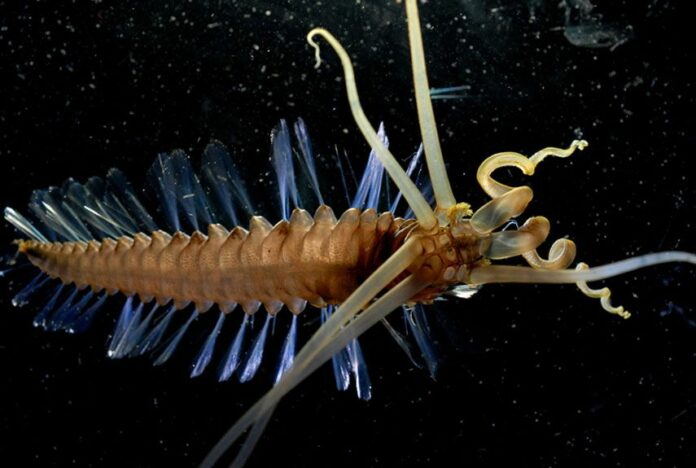Deep Sea Creature – The deep sea is one of Earth’s most mysterious and least explored places. It is a vast and mysterious realm that is home to a wide variety of creatures adapted to survive in the harsh conditions of the abyss. The deep sea is defined as the area of the ocean that lies below a depth of about 200 meters. It is characterized by a complete lack of light, high pressure, and extremely low temperatures. The deep sea is the largest habitat on Earth, covering about 60% of the planet’s surface.
Despite the challenging conditions of the deep sea, it is home to an incredible diversity of life. From the bioluminescent fish that light up the darkness to the giant squids that can grow up to 43 feet, the deep sea is home to a wide variety of strange and fascinating creatures. Scientists estimate that millions of species live in the deep sea, most undiscovered.
List Of 15 Deadly Dep Sea Creature:
Here are the 15 most dangerous deep-sea animals you must know of:
Giant Squid:
A giant squid is a deep sea species known for their large size, reaching up to 43 feet in length. They have elongated bodies, large eyes, eight arms, and two longer tentacles equipped with suckers and hooks. They are elusive creatures, and little is known about their behavior and habitat.
However, they are known to be a formidable predator, using their tentacles to capture prey such as fish and another squid. They are also known to be preyed upon by Sperm whales. They are considered a true deep sea creatures, found at depths ranging from 1000 to 2000 feet.
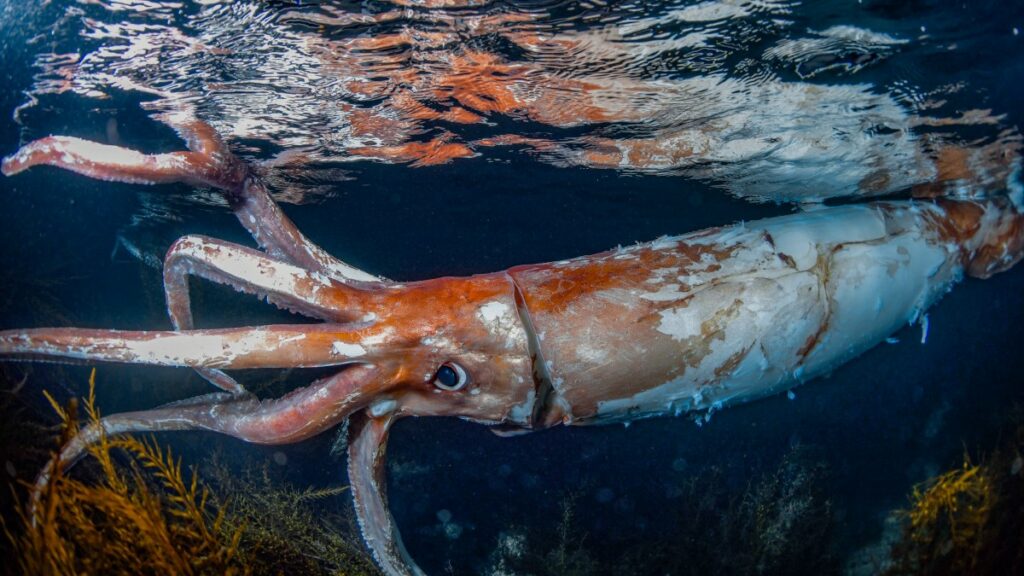
Deep Sea Anglerfish
They are known for their unique bioluminescent lure on the top of their head, which they use to attract prey. They are also characterized by their wide, toothy mouths and distensible stomachs, which allow them to swallow prey much larger than themselves. They are found at depths ranging from 2,000 to 5,000 feet and have a worldwide distribution.
Female anglerfishes are usually much larger than males. They are known for their parasitic mating habits, where the male will bite into the female and fuse with her, becoming nothing more than a sperm-producing organ.
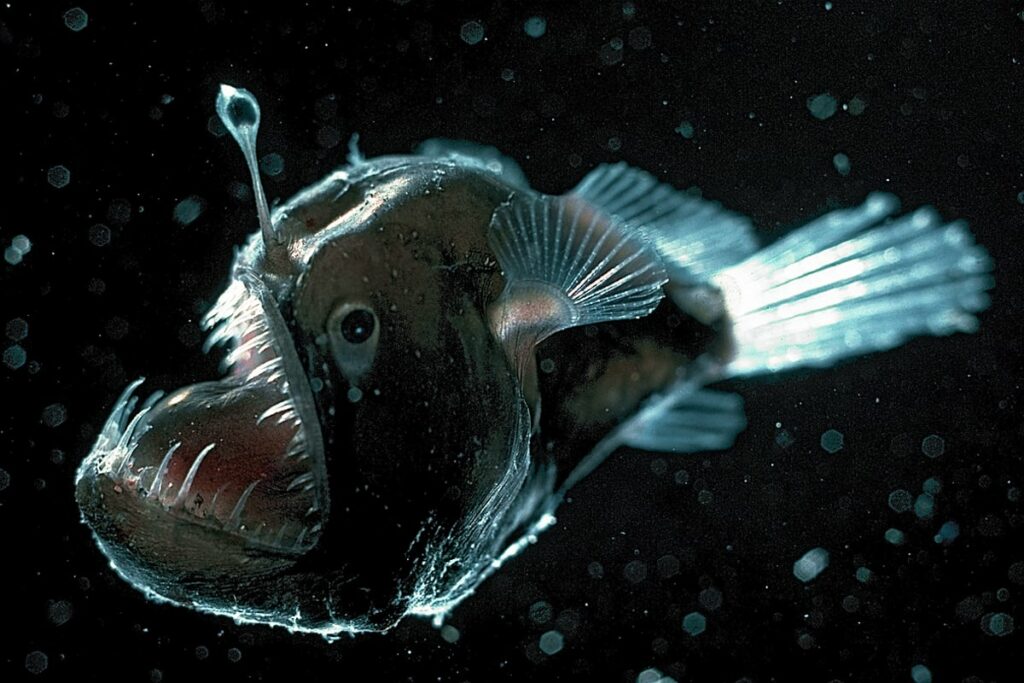
Great White Shark
Great White Sharks are one of the ocean’s most feared and well-known predatory species. They are known for their large size, reaching up to 20 feet in length, and their powerful jaws lined with serrated teeth.
They are found in coastal waters all over the world but are most commonly found in the coastal waters of North America, South Africa, and Australia. Great White Sharks are apex predators, meaning they are at the top of the food chain and have few natural predators.
They typically prey on marine mammals such as seals and sea lions and have occasionally been known to attack humans. They are not usually found in the deep sea but in shallower waters.
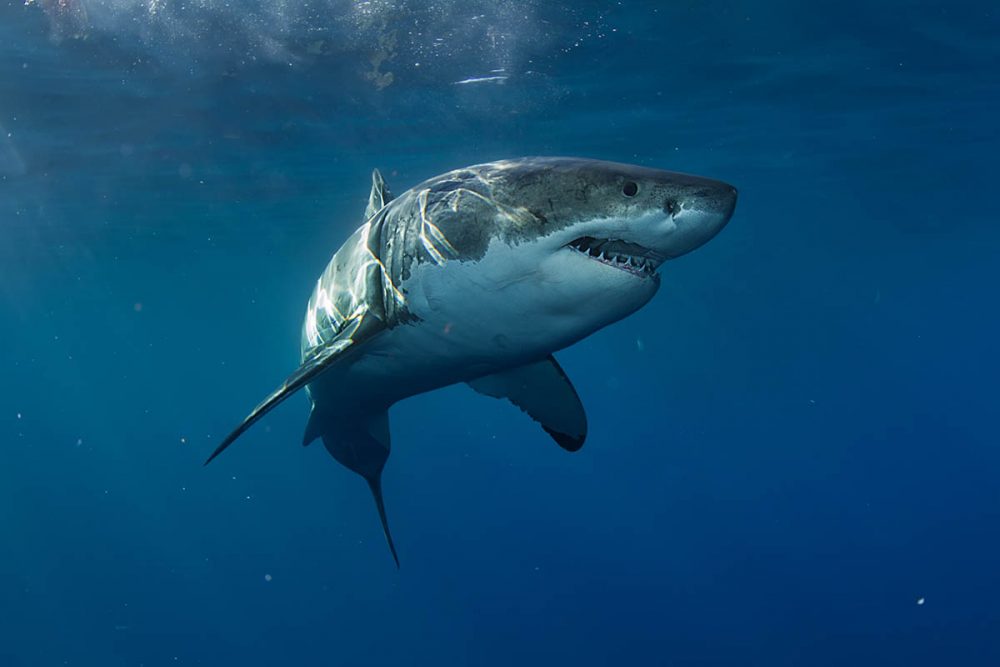
Bull Shark
Bull sharks are known for their aggressive behavior and ability to thrive in saltwater and freshwater environments. They can be found in coastal waters, rivers, and estuaries worldwide. They are known for their stocky build and unique dorsal fin shape, which is more triangular than the typical dorsal fin of other shark species.
They can grow up to 11.5 feet in length and have a reputation for being one of the most dangerous shark species to humans. These deep sea animal are known to be opportunistic predators, feeding on a variety of prey, including fish, crustaceans, and marine mammals. Like Great white sharks, they are also not found in the deep sea but in shallower waters.
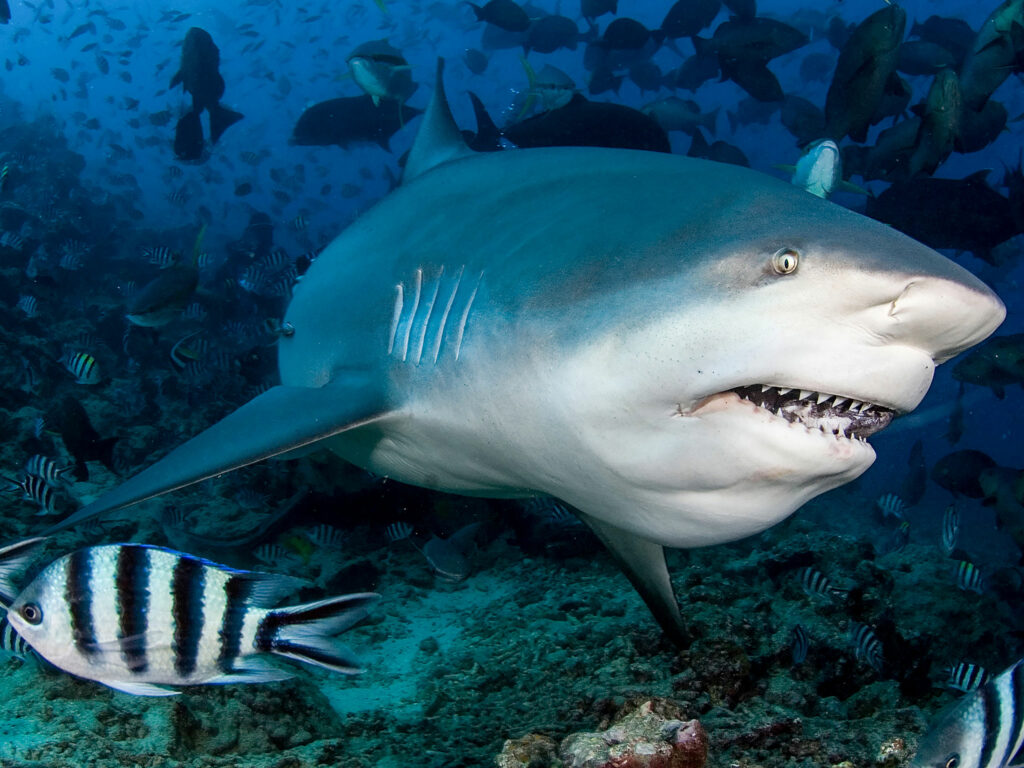
Blue-Ringed Octopus
The Blue-ringed octopus is a small, venomous species in the Pacific and Indian Oceans. They are known for their vibrant blue rings that appear when the octopus is threatened or agitated. They are typically only about the size of a golf ball but are incredibly dangerous.
They have venom that can cause paralysis and death in humans if left untreated. They are typically found in shallow waters, hiding in crevices and under rocks. They are solitary creatures and feed on small crustaceans, worms, and mollusks.
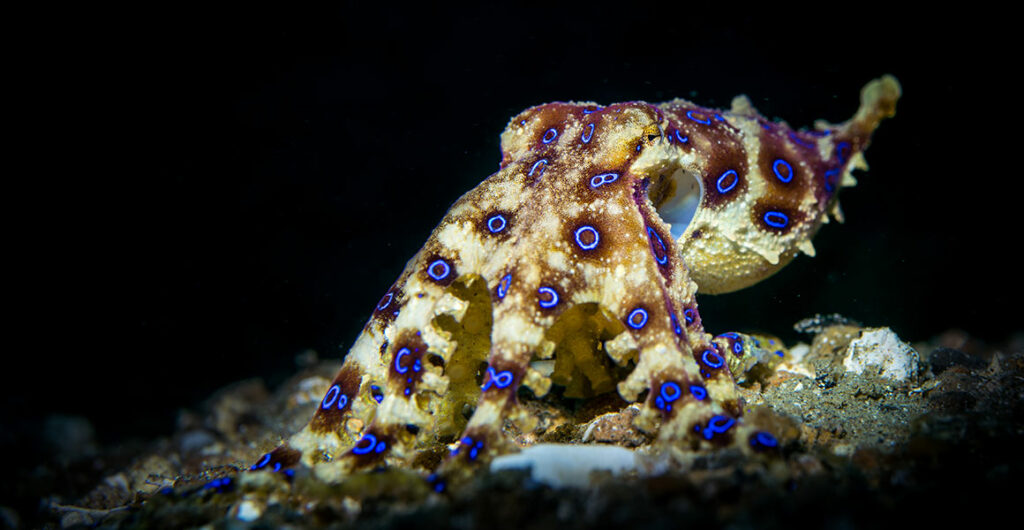
Lion’s Mane Jellyfish
The lion’s mane jellyfish is a jellyfish found in the cold, coastal waters of the Arctic, northern Atlantic, and northern Pacific oceans. They are named for their long, trailing tentacles that can reach up to 120 feet in length. They are the largest species of jellyfish in the world, with some individuals reaching up to 8 feet in diameter.
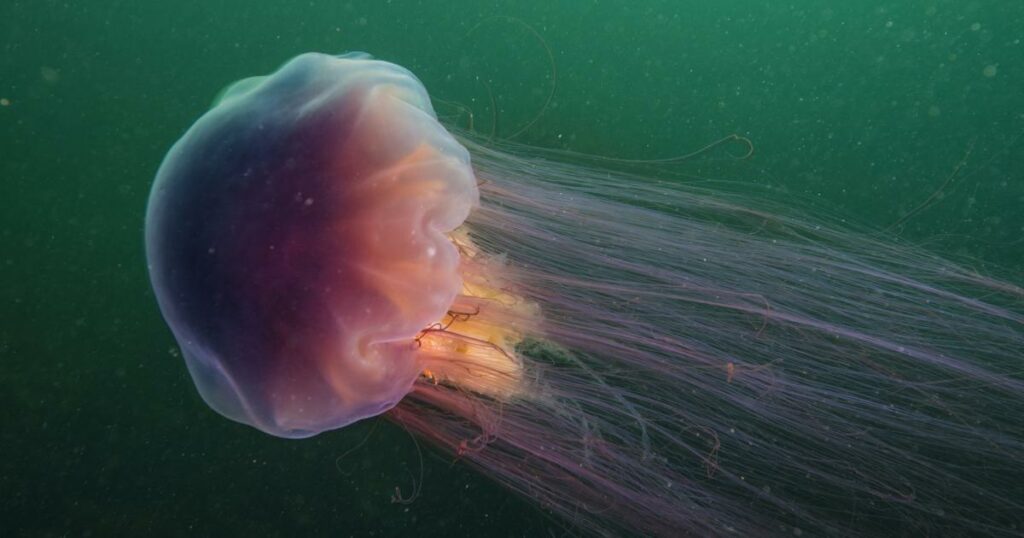
Moray Eel
They have a distinctive red, orange, or yellow bell with long, stinging tentacles. They are not typically dangerous to humans, but their stings can cause pain and discomfort. They feed on small fish and plankton, using their tentacles to capture prey.
Moray eels are a species of eel found in warm coastal waters worldwide. They are known for their long, snake-like body and large, toothy jaws. They can grow up to 10 feet in length and are typically found in rocky crevices and reef habitats.
This deep sea creature is known to be an aggressive predator, feeding on various fish and crustaceans. They are also known to be territorial and will defend their territory against other animals. They have a reputation for being dangerous to divers and swimmers, although attacks are relatively rare.
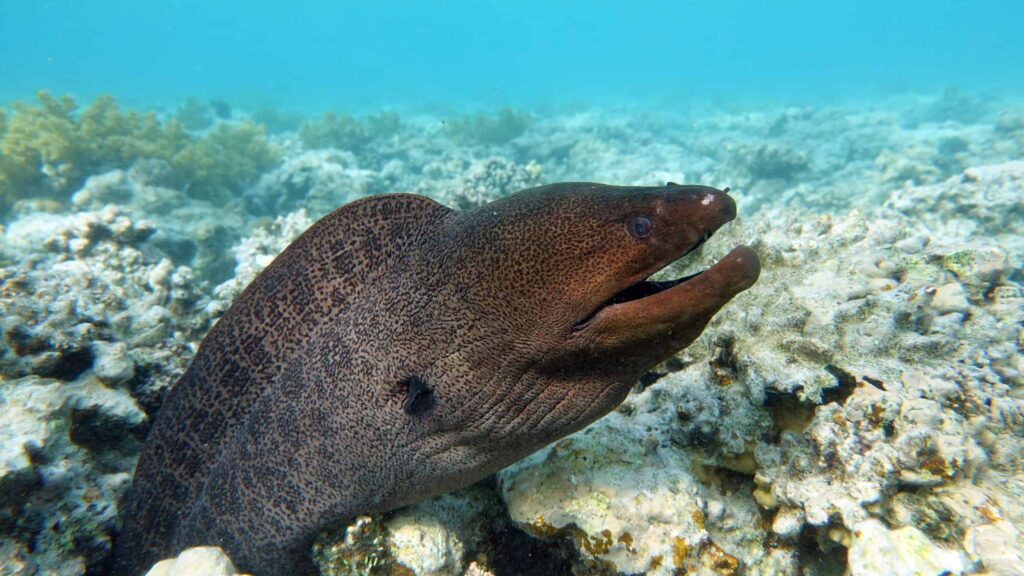
Stonefish
Stonefish is a venomous fish species commonly found in the waters of the Indo-Pacific region. They have a hidden appearance, blending into the ocean floor, making them difficult to spot. Stonefish has 13 dorsal spines that contain potent neurotoxins, which can cause severe pain, swelling, and paralysis if not treated immediately. They are considered the most venomous fish worldwide, and contact with their spines should be avoided.
Stonefish stings can be life-threatening, and victims should seek medical attention immediately. To prevent stonefish stings, it’s advisable to wear protective footwear when entering the ocean and to be cautious when handling or stepping on objects in the water.

Box Jellyfish
The box jellyfish is a species of jellyfish considered one of the most venomous creatures in the world. Found in the waters of the Pacific and Indian Oceans, it has tentacles that contain toxins that can cause intense pain and even death. The box jellyfish has a translucent and cube-like bell, which gives it its name, and can grow up to 30 cm in diameter. Its tentacles trail behind it as it swims, making possible accidental contact with swimmers or divers.
In case of a sting, immediate first-aid measures include vinegar to neutralize the tentacles and a pressure immobilization bandage to slow the spread of venom. Severe stings can lead to heart failure, difficulty breathing, and death, making it important to seek medical attention as soon as possible.
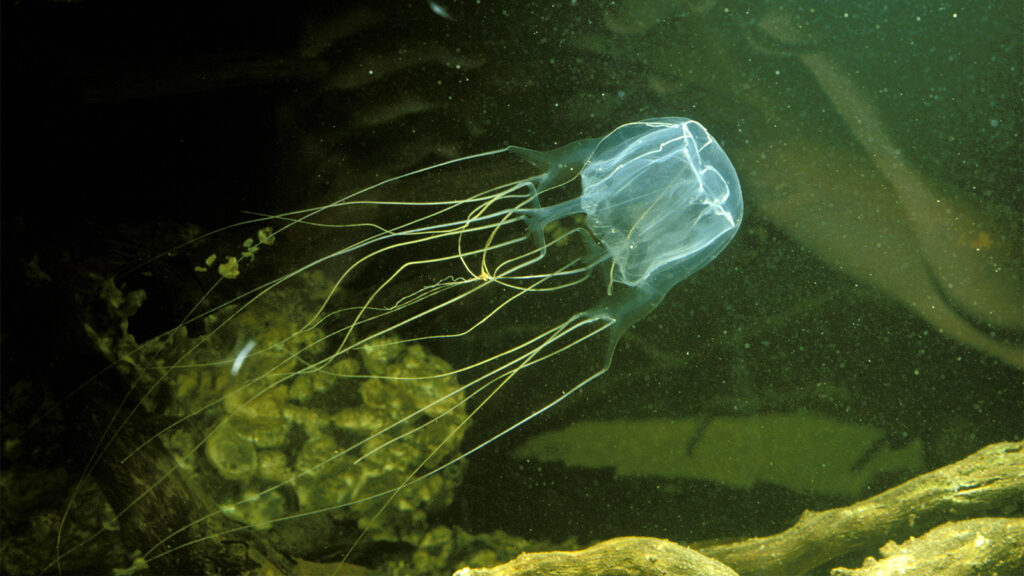
Barracuda
Barracudas are predatory fish that belong to the Sphyraenidae family. They are known for their sleek, elongated bodies and sharp teeth. They are found in tropical and subtropical waters worldwide and can grow up to six feet in length. Despite their intimidating appearance, barracudas are usually not a threat to humans, but attacks have been known to occur. This is usually due to the barracuda mistaking a person for prey or being provoked.
Barracuda flesh is edible, but some species contain high levels of ciguatera, a type of food poisoning, so it is important to know the local regulations and only to consume barracuda that have been properly prepared and cooked. Overall, it is best to avoid provoking this weird sea creature and to give them a wide berth while swimming or diving.
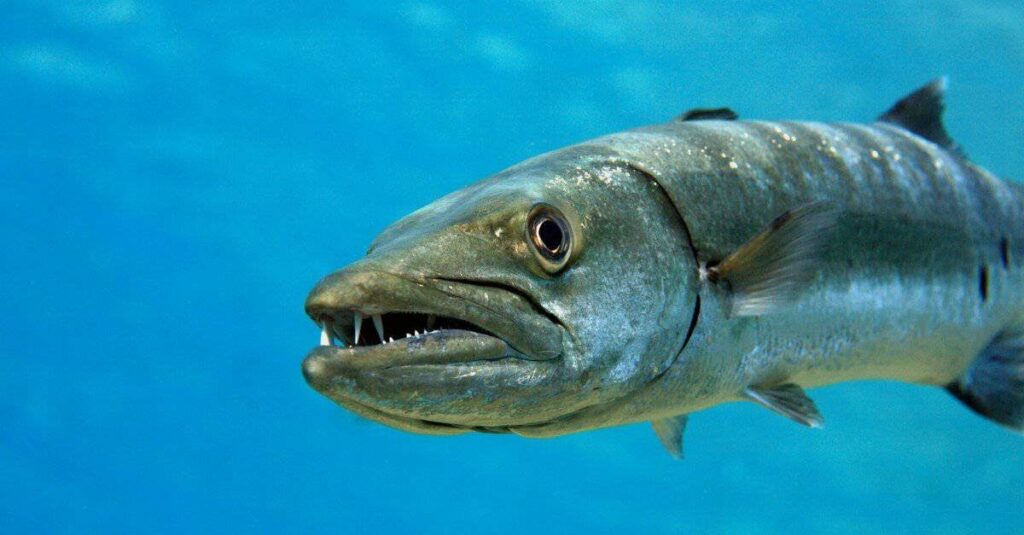
Electric Eel
The electric eel is a species of eel found in the Amazon and Orinoco River basins in South America. This deep sea creature can grow up to eight feet in length and generate electric shocks of up to 600 volts to stun prey and defend itself. Despite its name, the electric eel is not a true eel but rather a knife fish that has adapted to life in murky waters by developing its electric ability.
While the electric eel is not dangerous to humans unless provoked, it has been known to cause injury to those who attempt to handle it. The electric eel is also important for scientific study, as its electric abilities have inspired research in fields such as robotics and medicine. However, due to habitat destruction and overfishing, the electric eel is now considered endangered, and efforts are underway to conserve this unique species.
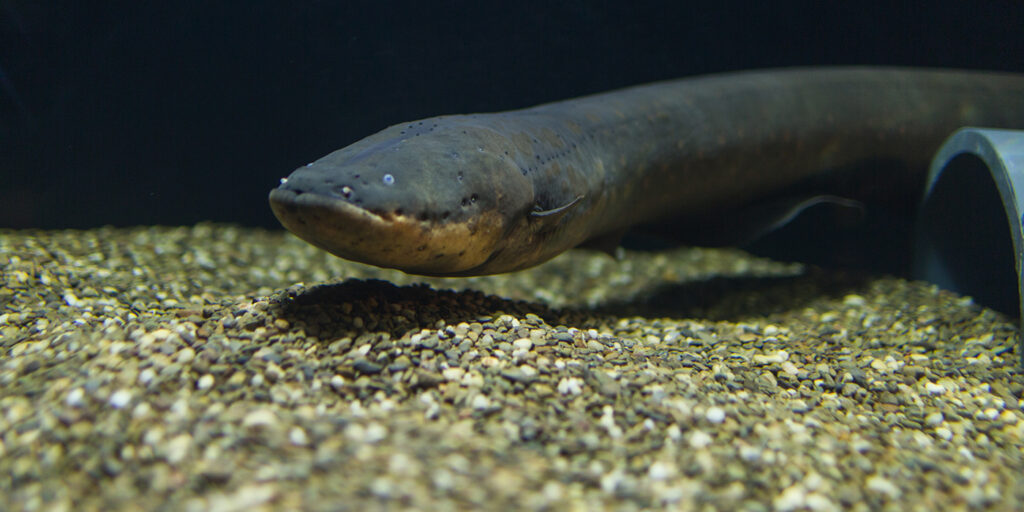
Venomous Cone Snail
The venomous cone snail is found in the tropical waters of the Pacific and Indian Oceans. This deep sea animal has a conical shell that comes in various colors, making it highly prized by collectors. However, the cone snail is also highly venomous, and its harpoon-like tooth can deliver a toxic cocktail of neurotoxins, cardiotoxins, and nephrotoxins.
A cone snail sting can cause severe pain, paralysis, and even death in extreme cases. To avoid a sting, it is important to never touch or handle a cone snail with bare hands and only to observe it from a safe distance. In case of a sting, immediate first-aid measures include immobilizing the affected limb and seeking medical attention as soon as possible. The venom of cone snails is also of interest to researchers, as it has potential applications in fields such as pain management and cancer treatment.

Red Lionfish
The red lionfish is a species of venomous fish native to the Atlantic Ocean region. They have a distinctive appearance: vibrant red and white stripes, long, fan-like fins, and venomous spines. They are considered invasive in the Atlantic Ocean and have spread rapidly along the US East Coast and the Caribbean. This weird sea creature has a voracious appetite. It has been known to disrupt local ecosystems by preying on native species, competing for food, and altering the food chain balance.
Lionfish stings can cause severe pain and swelling and, in some cases, difficulty breathing and heart palpitations. To avoid a sting, it is important to never touch or handle a lionfish with bare hands. Instead, use a long-handled net or fishing gear to remove them from the water. The red lionfish is considered a delicacy in some cultures and is hunted for sport in some areas.
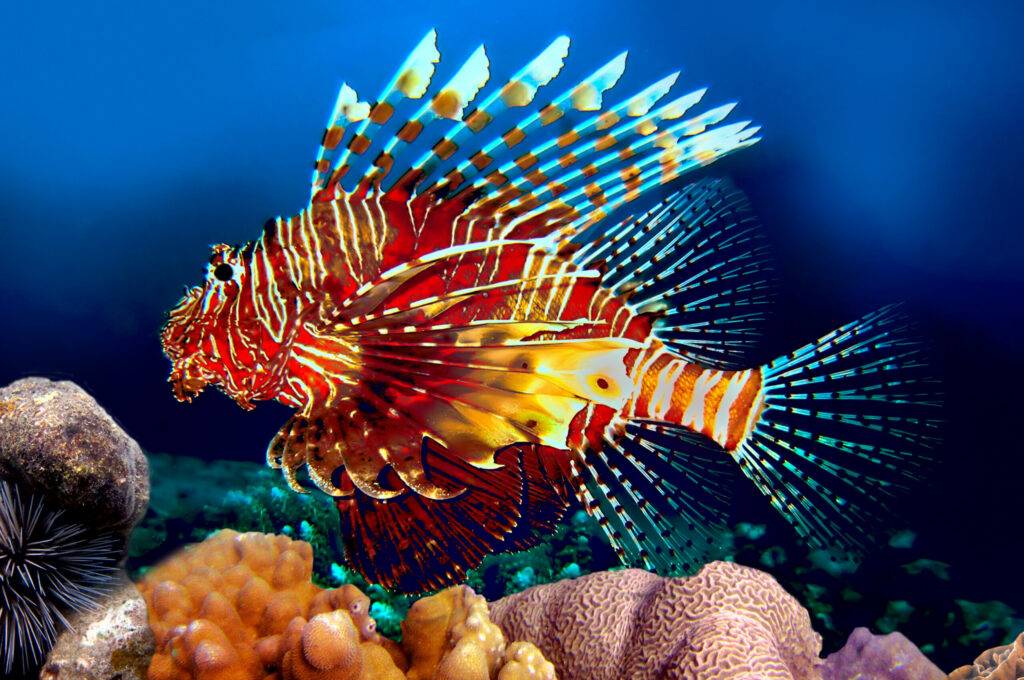
Yellow-Bellied Sea Snake
The yellow-bellied sea snake is a species of venomous sea snake that is widely distributed in the tropical waters of the Indo-Pacific region. It has a slender, yellow-green body and can grow up to two feet in length. This deep sea animal is an excellent swimmer and is often seen floating on the ocean’s surface, using its flattened tail as a rudder.
Despite its nasty bite, the yellow-bellied sea snake is not considered a threat to humans, as it is shy and reluctant to bite. However, it is still important to exercise caution when in its presence and to never touch or handle it with bare hands.
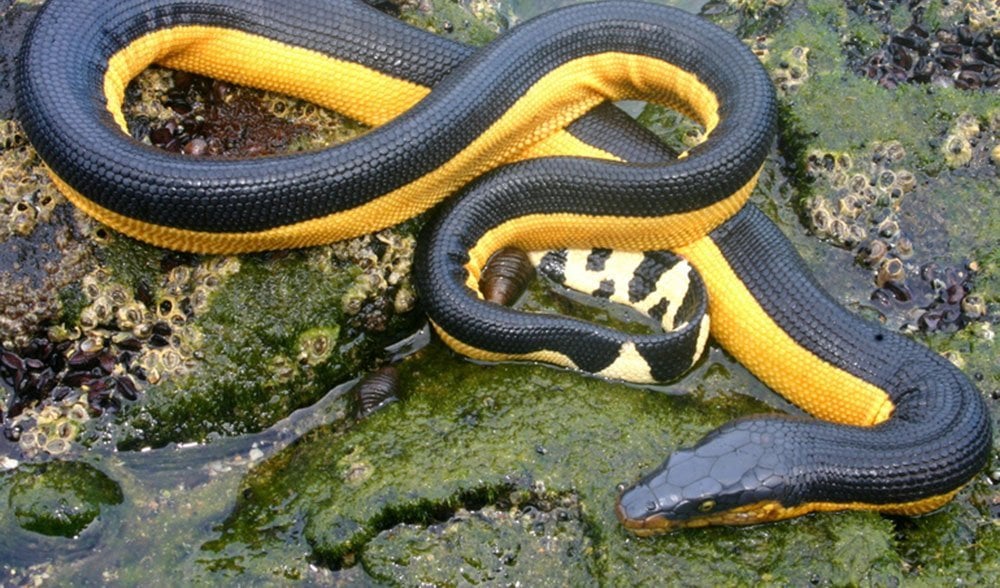
Giant Isopod
The giant isopod is a species of large, bottom-dwelling crustacean found in the deep waters of the Atlantic and Indo-Pacific oceans. It resembles a giant, armor-plated woodlouse and can grow up to 16 inches in length. This Deep sea creature is a slow-moving and sluggish creature that feeds on the dead and decaying matter on the ocean floor.
Despite its intimidating appearance, it is not considered a threat to humans. However, due to its unusual appearance and slow-moving habits, the giant isopod has become a popular subject of study among marine biologists and a fascination among the public. Little is known about the giant isopod’s life history and behavior.
Still, research has revealed that it can survive long periods without food and has a unique adaptation that allows it to withstand the intense pressure of the deep ocean. The giant isopod is also an important species for studying the impact of human activities, such as pollution and overfishing, on the deep sea ecosystem.
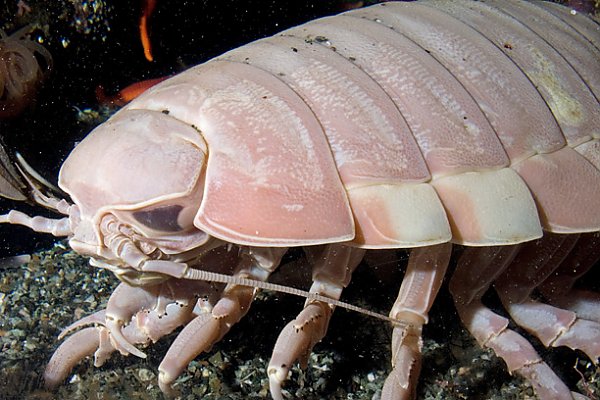
Frequently Asked Questions (FAQs):
What are deep sea creatures?
Deep sea creatures live in the deep ocean, typically below 200 meters. They are adapted to survive in the extreme conditions of the deep sea, including low light levels, high pressure, and near-freezing temperatures.
What kind of creatures can be found in the deep sea?
The deep sea is home to various unique and fascinating creatures, including giant squid, anglerfish, flashlightfish, vampire squid, and deep sea crabs. Many of these species have adapted to the deep sea conditions by developing bioluminescent abilities or by evolving to have large eyes to see in the dark.
How do deep sea creature survive in the deep ocean?
Deep sea creatures have evolved to survive in the extreme conditions of the deep sea by developing unique adaptations, such as bioluminescence, large eyes, and tough exoskeletons. Some species can also produce their light or have specialized feeding mechanisms that allow them to find food in the dark and cold waters of the deep sea.
Are deep sea creatures dangerous to humans?
Most deep sea creatures are not dangerous to humans, as they cannot survive in the shallow waters of the coast. However, some species, such as the venomous cone snail or the giant isopod, can be dangerous if touched or handled with bare hands. It is important to exercise caution when in these creatures’ presence and never touch them without proper protection.
Why is it important to study deep sea creatures?
Studying deep sea creatures is important for several reasons, including improving our understanding of the unique adaptations that allow them to survive in the extreme conditions of the deep sea, learning about the impact of human activities such as pollution and overfishing on the deep sea ecosystem, and discovering new species and genes that could have potential applications in fields such as medicine and biotechnology.
What is inside the Dead Sea?
The Dead Sea contains high levels of salt and minerals, including magnesium, potassium, and calcium. The water is so salty that most fish and other aquatic life can’t survive, hence its name, “Dead Sea.” Its minerals are used in cosmetics and treatments.
Does the sea monster really exist?
No scientific evidence exists that sea monsters exist as commonly portrayed in mythology and folklore. However, the deep sea is home to many unusual and poorly understood species, leading some to believe in the existence of sea monsters. Further study and exploration of the deep sea are needed to understand the unique creatures that call it home fully.

